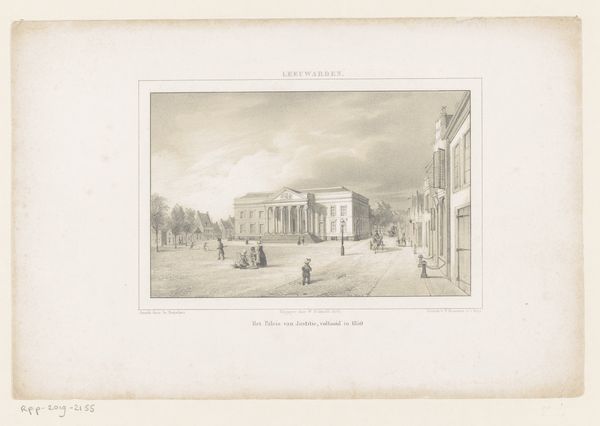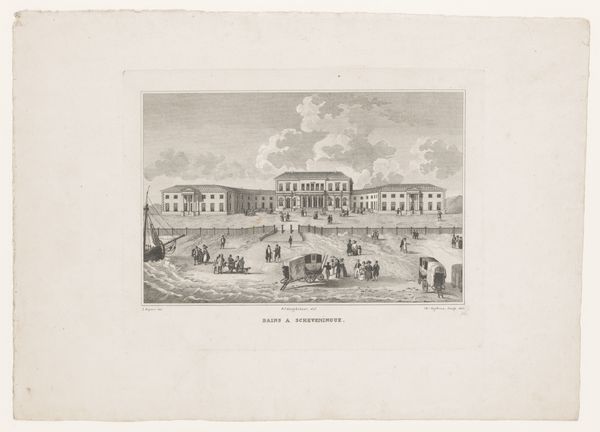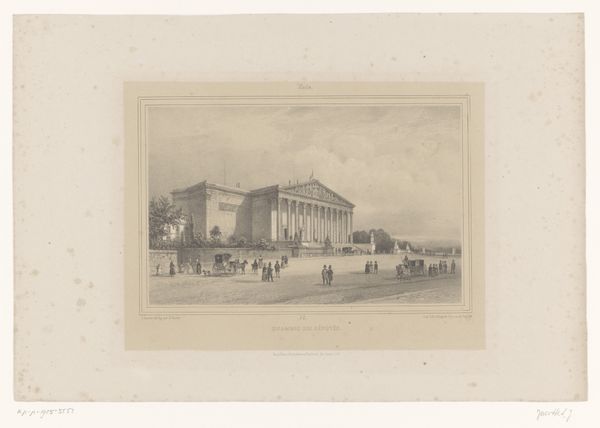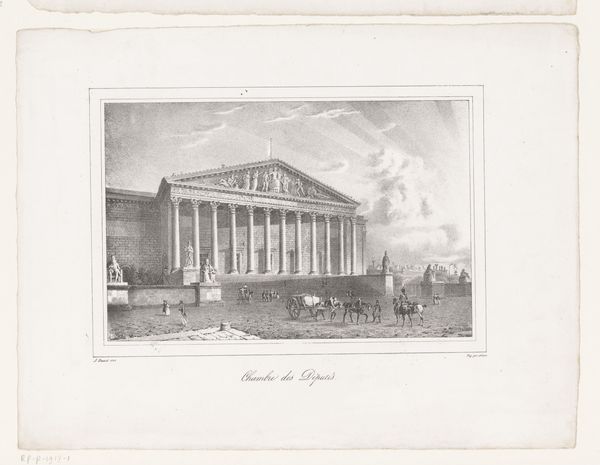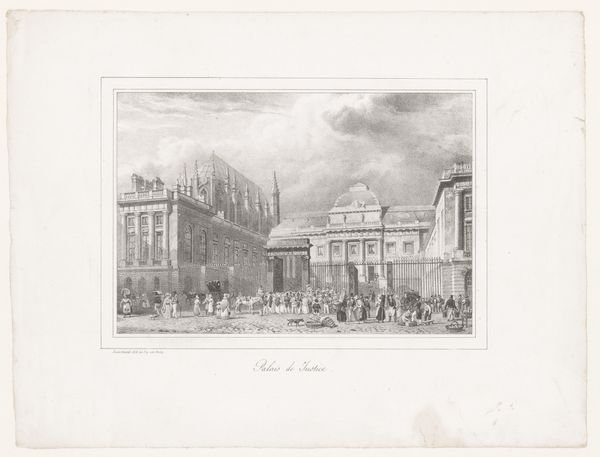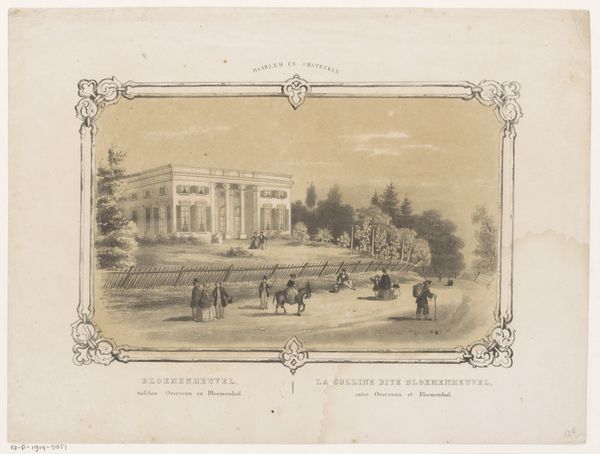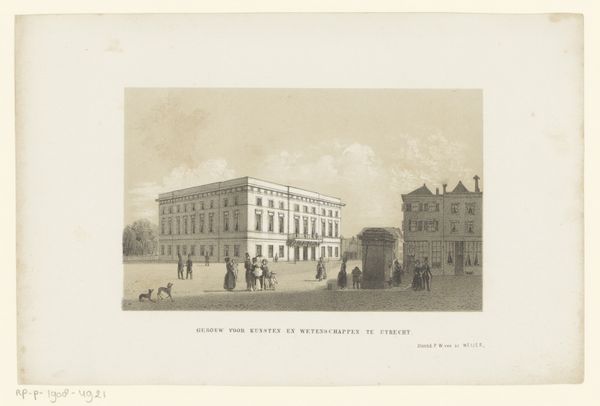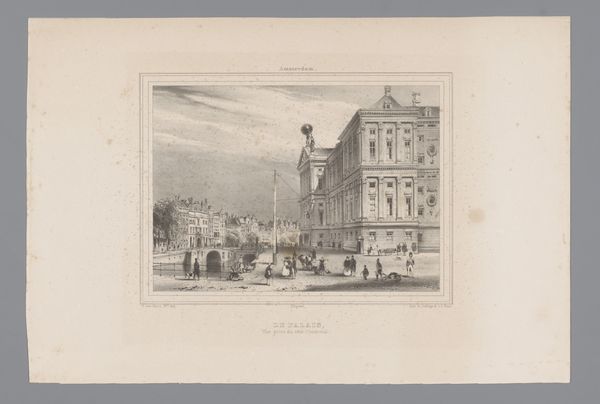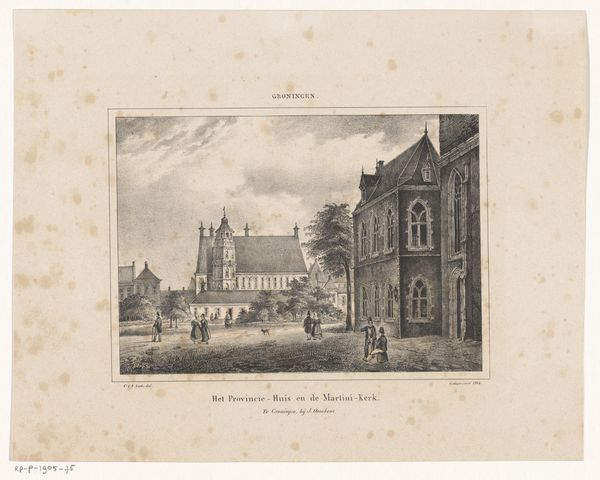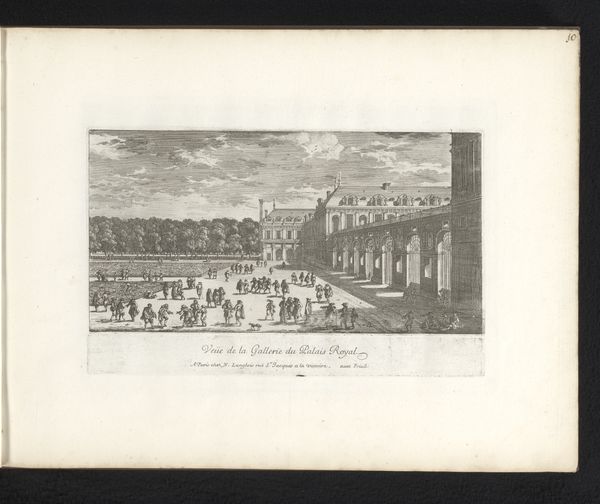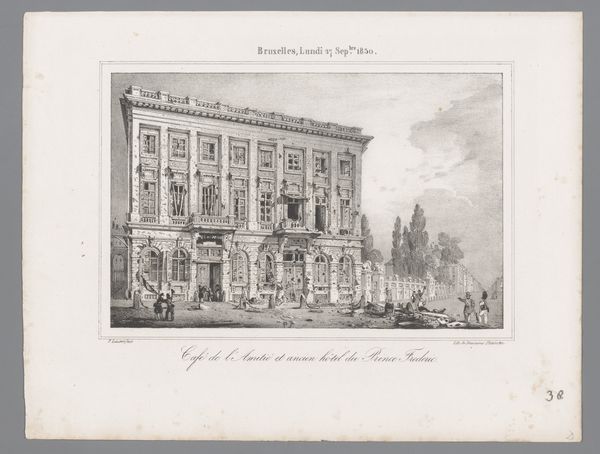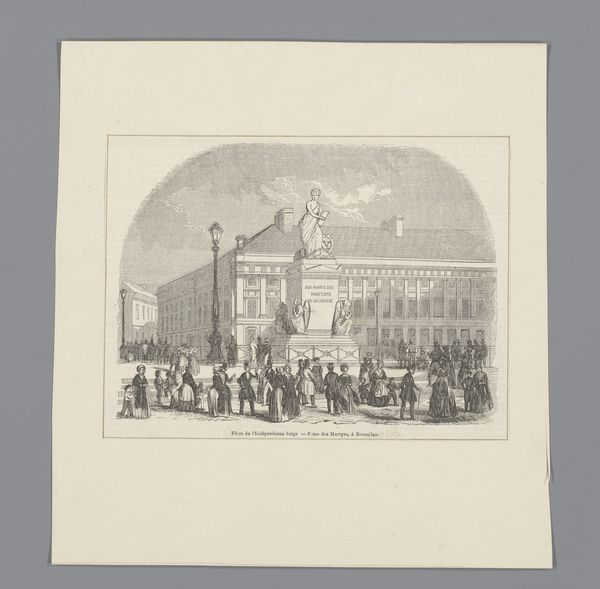
Grote Markt in Groningen met de Waag en het kantoor van Waarborg 1834
0:00
0:00
print, engraving
# print
#
romanticism
#
cityscape
#
engraving
#
realism
Dimensions: height 230 mm, width 295 mm
Copyright: Rijks Museum: Open Domain
Carel Christiaan Antony Last created this print of the Grote Markt in Groningen, using a technique called lithography. Lithography is a printmaking process that relies on the chemical repulsion of oil and water. The artist draws an image on a flat stone or metal plate with a greasy crayon, then treats the surface so that ink only adheres to the drawn areas. The print is then made by pressing paper against the inked surface. Here, the lithographic process allows for a high level of detail. The process is critical to the image's impact. The sharp lines create a sense of precision, mirroring the architecture in the print. The lithographic technique allows for the distribution of imagery, making it a key medium for disseminating ideas and representations of places to a wider audience. Looking closely, you can see that the print captures the hustle and bustle of the marketplace, with figures going about their daily business. The print serves as a record of a specific place and time but also reflects the rise of industrialization and the changing urban landscape. Appreciating the means by which it was made deepens our understanding of the image, recognizing that art is not just about what is depicted, but how it is made.
Comments
No comments
Be the first to comment and join the conversation on the ultimate creative platform.

